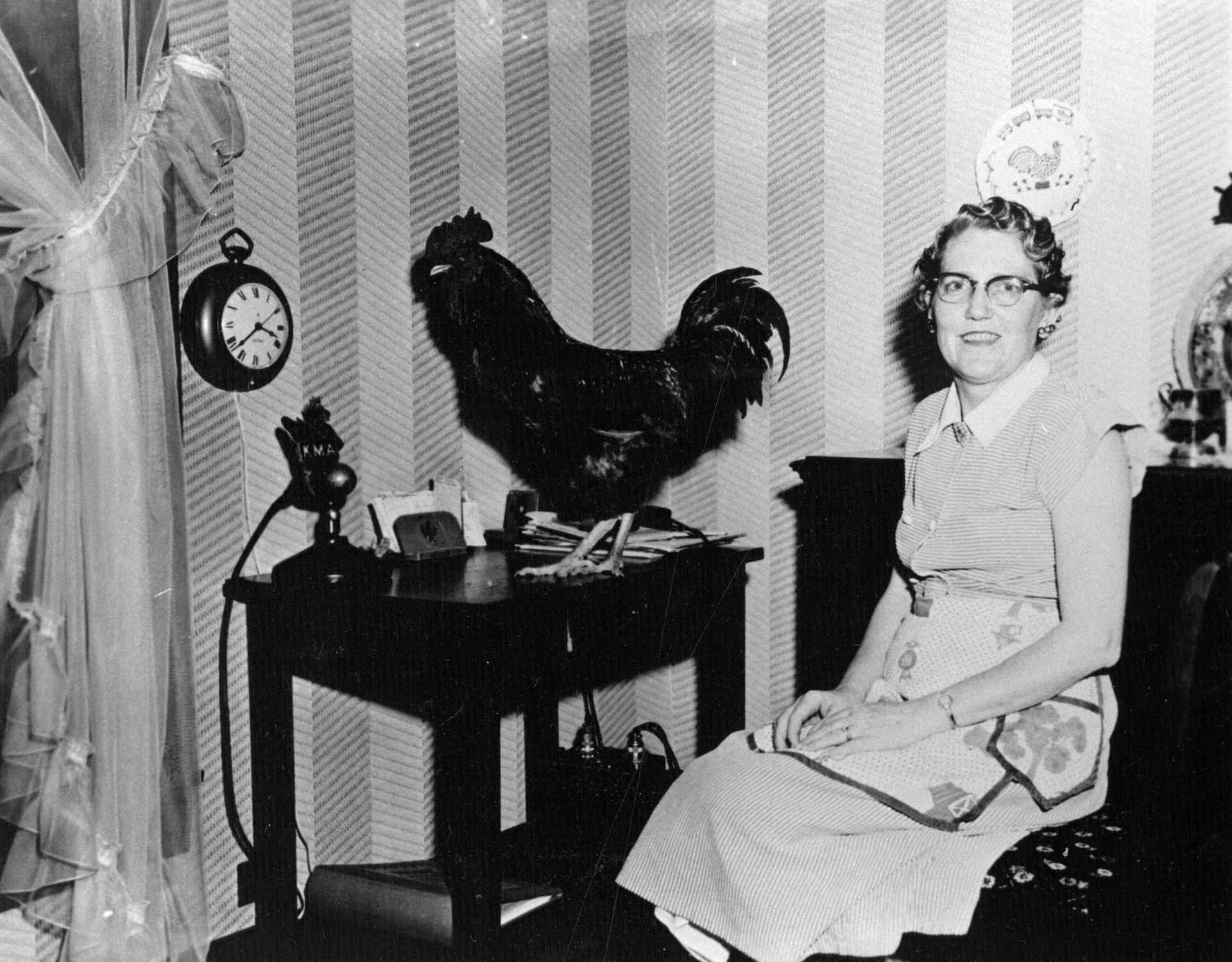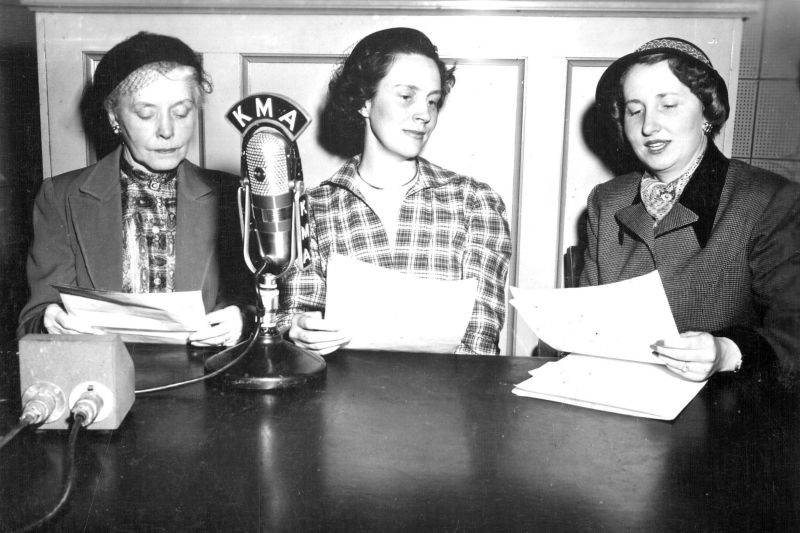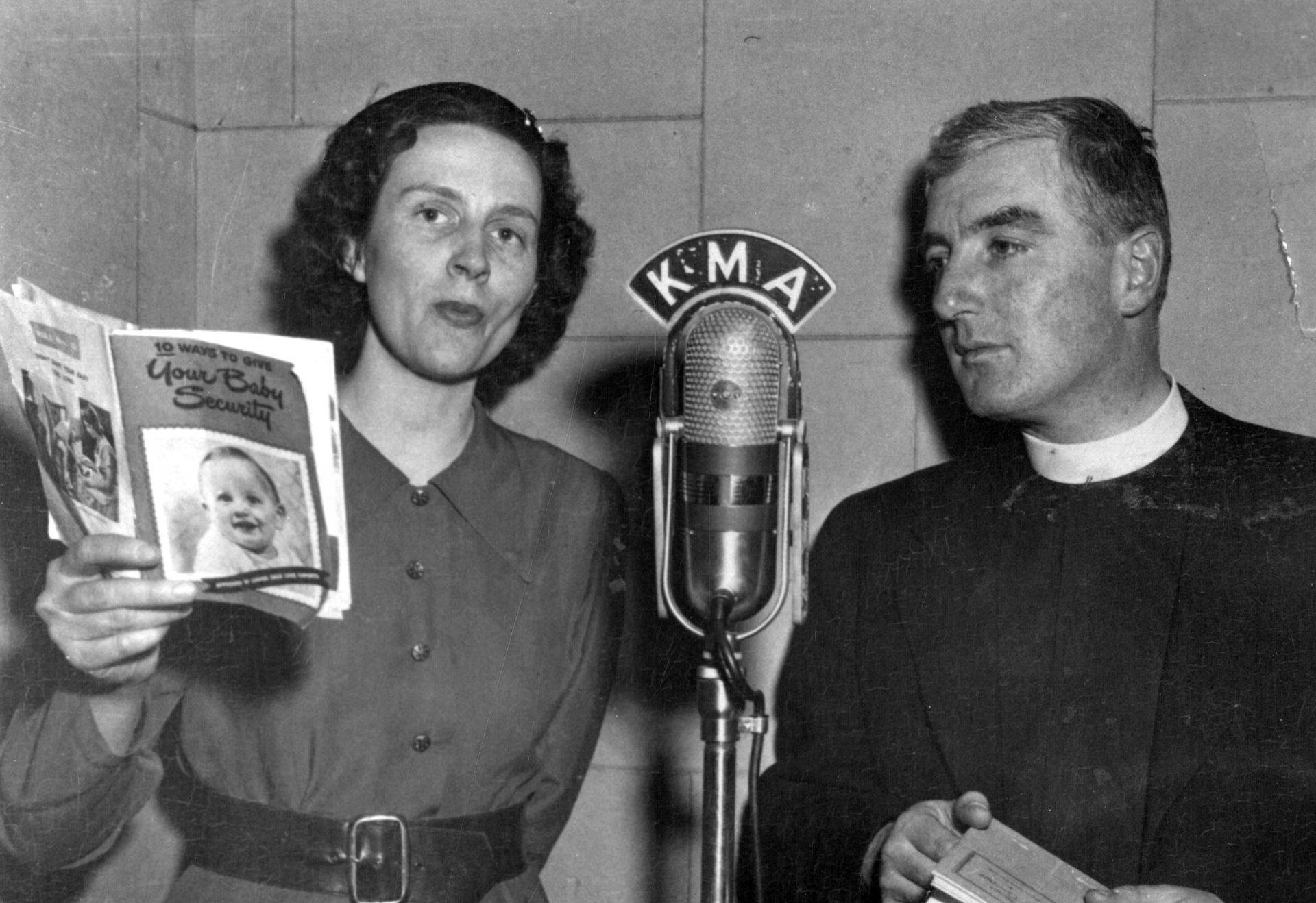Long before the homemade vibes of food podcasts, there were folksy radio homemakers. These early 20th-century women offered recipes, life hacks and insights for the modern farmer's wife. And just like podcasts today, their shows were often personal, off-the-cuff and straight from the kitchen table.
"We were just women who shared our lives," says Evelyn Birkby. "We shared what we were doing with our families, what we were cooking, what we were eating." Birkby began hosting Down a Country Lane out of Shenandoah, Iowa, 65 years ago on KMA radio.
The station was the brainchild of Earl May, owner of the May Seed and Nursery Company. In 1925, the early days of radio, May saw the new medium as way to build an audience for his products. He asked listeners to write in with their addresses for a free flower bulb — and quickly expanded his catalogue mailing list. By continuing to create new, woman-centered content every day, his nursery was ever present in the ears of people who made the household buying decisions.
KMA broadcasts, and others like them, gave farm wives information they could use every day, while connecting listeners across the isolation of the Midwestern prairie. The familiar voices who hosted these shows became an intimate presence in fans' homes — in part, because some women broadcast right out of their homes. Birkby, who still broadcasts once a month, collected the stories of some of these pioneering female broadcasters in her book Neighboring on the Air: Cooking With the KMA Radio Homemakers.

Florence Falk, who hosted The Farmer's Wife, gave her audience a taste of farm life by narrating the scenes she spotted through her dining room window and sharing dishes inspired by her Swedish heritage. Adella Shoemaker drew listeners in for a "visit" to her sunroom, reveling in the freedom that the new medium of radio gave her. Birkby says that Shoemaker loved the idea that she could move from kitchen to microphone, appearing before her fans even in an apron splattered with the day's canning. And after a car accident put Leanna Driftmier in a wheelchair, she hosted her popular Kitchen-Klatter from the mini-studio that KMA set up in her house. There, she dished up recipes for Midwestern staples like meatloaf and angel food cake.

